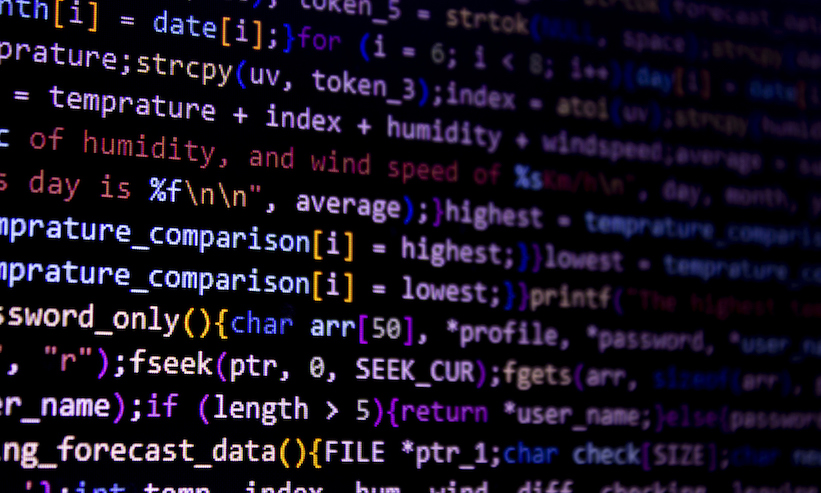Have you ever encountered the frustrating “zsh: command not found: python” error in your terminal while trying to run Python scripts? Don’t worry; you’re not alone! This common issue can throw a wrench in your workflow, but fear not – we’ve got you covered. In this blog post, we’ll dive into the ins and outs of this error, explore its causes, and provide you with practical solutions to resolve it swiftly. Say goodbye to those pesky error messages and hello to seamless Python scripting!
Understanding the Paython
Python is a versatile and powerful programming language that is widely used for various applications, including web development, data analysis, artificial intelligence, and automation. Known for its readability and simplicity, Python has gained popularity among developers of all levels.
One of the key strengths of Python is its extensive standard library, which provides ready-to-use modules and packages to streamline coding tasks. Additionally, Python’s syntax emphasizes clean code structure and indentation-based formatting, making it easy to write and maintain code.
Whether you’re a beginner diving into the world of programming or an experienced developer looking to enhance your skill set, mastering Python can open up a world of opportunities in the tech industry. With its broad range of applications and user-friendly design, Python continues to be a favorite choice among programmers worldwide.
Common causes of the error and how to avoid them
When encountering the “zsh: command not found: python” error in your terminal, understanding its common causes is crucial for effective troubleshooting. One prevalent reason for this error is an outdated or misconfigured PATH environment variable. This can lead to the system not being able to locate the Python interpreter when you try to run a Python script.
Another common cause could be that Python is not installed on your system at all or it’s installed incorrectly. Ensure that you have properly installed Python and that it’s included in your PATH variable to avoid running into this issue.
Moreover, conflicts with different versions of Python may also trigger this error. It’s essential to manage multiple versions correctly and set up the appropriate aliases if needed. Keeping track of any changes made to your system’s configuration can help prevent this error from occurring in the future.
Steps to resolve the error in your terminal
To resolve the “zsh: command not found: python” error in your terminal, there are several steps you can take. Ensure that Python is properly installed on your system. You can do this by checking the installation directories and updating Python to the latest version if necessary.
Next, configure your PATH environment variable to include the directory where Python is located. This will allow your terminal to locate the Python executable when running commands.
If you’re still encountering the error, try restarting your terminal or even rebooting your computer. Sometimes a simple reset can help refresh system variables and resolve any issues causing the error.
Another troubleshooting step is to check for any conflicting aliases or custom configurations that might be interfering with Python’s execution in your terminal. Remove any unnecessary configurations that could be causing conflicts.
Consider reinstalling Python altogether if none of the above steps work. Reinstalling can help fix any corrupted files or missing components that may be contributing to the error message.
Alternative solutions for the error
If you encounter the “zsh: command not found: python” error in your terminal, fear not. There are alternative solutions to help you out of this predicament.
One option is to check if Python is properly installed on your system. You can do this by running the command `python –version`. If Python is indeed installed, you may need to update your PATH variable to include the path to where Python is located.
Another solution could be using a virtual environment like Anaconda or Virtualenv. These tools allow you to create isolated environments with their own set of dependencies, which can help avoid conflicts and errors related to missing commands.
Alternatively, consider using an online IDE or coding platform that provides a pre-configured environment for Python development. This way, you can bypass any local setup issues and focus on writing code without worrying about missing commands in your terminal.
Exploring these alternative solutions can potentially resolve the “zsh: command not found: python” error and get you back on track with your coding projects.
Tips for preventing the error in the future
To prevent the “zsh: command not found: python” error from popping up in your terminal again, there are a few proactive steps you can take. First and foremost, ensure that Python is properly installed on your system and that its path is correctly set in the environment variables. Regularly updating Python to the latest version can also help mitigate compatibility issues.
Another tip is to double-check any changes made to your system’s configuration files or PATH variable settings before encountering the error. It’s important to be cautious when installing new software or making updates, as they may inadvertently interfere with Python’s accessibility.
Moreover, consider using virtual environments for your Python projects to isolate dependencies and avoid conflicts with globally installed packages. This practice not only helps in organizing different project requirements but also minimizes the chances of encountering command-not-found errors.
Staying informed about best practices for managing programming languages on your operating system can go a long way in preventing such errors. By keeping abreast of relevant updates and guidelines, you’ll be better equipped to troubleshoot any potential issues efficiently.
Conclusion
By understanding the common causes of the “zsh: command not found: python” error and following the steps to resolve it in your terminal, you can quickly overcome this issue. Remember to consider alternative solutions if needed and implement tips for preventing the error from occurring in the future. With these strategies in place, you can ensure a smoother experience when working with Python in your terminal. Now you are equipped with the knowledge to tackle this error effectively and continue coding with confidence.









